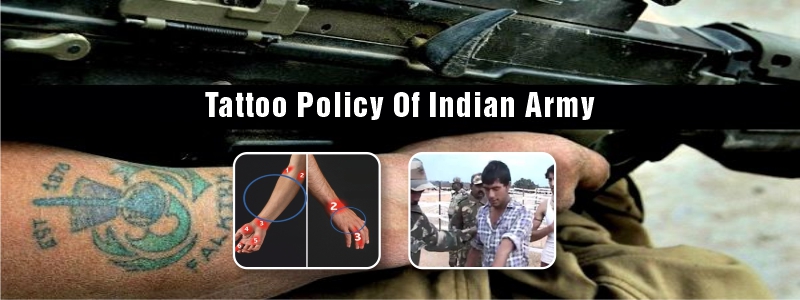TATTOO POLICY FOR SSB CANDIDATES
Defence aspirants appearing for their SSB interview put in their best efforts so that they do not lack in any of the fields. Here are some details providing regarding TATTOO POLICY FOR SSB
There are some points that the candidates don’t take seriously and end up being sent back from the center without appearing for the interview. Many a times the candidates just focus on their preparations but they forget about their physical aspects. These aspects must be brought into consideration by the candidates prior to their appearance in the interview. One such aspect is the body part with tattoo. Read the TATTOO POLICY FOR SSB
There are candidates that have tattoos but they miss out the fact that they have to provide the board with a written confirmation for the same. I shall be discussing this issue here.
It’s not that candidates with tattoos are not allowed to appear in their SSB interview. There just exists certain rules and criteria that need to be taken into consideration.
CANDIDATES FROM TRIBAL COMMUNITIES
Up-and-comers having ancestral networks or are from ancestral regions, proclaimed by the Government of India as Scheduled Castes and Scheduled Tribes, are allowed to have permanent body tattoos on any piece of the body, according to existing traditions and customs of the said clan to which an applicant has a relation with.
Such competitors are allowed to proceed with the selection cycle in a SSB relying on the prerequisite that the accompanying authentications are presented by the applicant from an ancestral region, before beginning of Stage I of the selection procedure:-
- A signed off self-certification certificate as mentioned in Appendix ‘A’, to be provided by the candidate.
- Certificate of having a relation with an ancestral local area and permissibility of permanent body tattoo(s) according to Appendix ‘B’, to be endorsed by one of the accompanying two authorities:-
- DC/DM or SDM of the District/Tehsil where the clan of the up-and-comer is as of now settled (Name and assignment of the concerned authority should be unmistakably mentioned).
- Chairman/Secretary or some other senior individual from the Tribe (Name, assignment (assuming any) and address of the concerned part will be unmistakably mentioned).
3.Comments of the Commandant, Selection Center on permanent body tattoo(s) on applicants from ancestral networks will be as at Appendix ‘C’.
CANDIDATES WITH TATTOOS NOT BELONGING TO TRIBAL COMMUNITIES
Candidates not belonging to the tribal groups are allowed to have a permanent body tattoo but they have to provide a Self Certification Certificate as mentioned in Appendix ‘D’
- Tattoos are allowed on the inner face of forearms (from the elbow to the wrist) of both hands.
- They are also allowed on the dorsal side (both hands) of the palm (back side of the hand).
As for the nature of tattoos, there are two that are considered in context of your SSB interview.
They are permissible and non-permissible tattoos.
First, I shall talk about the permissible tattoos:
- Specifically, there is no description regarding the size and type of the tattoo, but they are allowed on the specified body parts, i.e. inner face of forearms and dorsal side of the palm.
- Just small harmless tattoos, that are not biased to good order and military discipline are allowed for example religious symbols or names of loved ones and so forth are allowed.
Apart from the permissible ones, there are the non-permissible tattoos.
Tattoos are to be considered as non-permissible on the following basis irrespective of their type:
- If they are to be found on any other body part, other than the ones mentioned.
- Tattoos with indecent figures or derogatory content.
- Tattoos that are profane, chauvinist or bigot, clarified as follows:-
- Tattoos that are terribly hostile to humility, respectability or appropriateness.
- Misogynist tattoos that advocate a way of thinking that disparages an individual dependent on sexual orientation.
- Bigoted tattoos advocate a way of thinking that debases or disparages an individual dependent on race, identity or locale and religion.

For more blogs and details subscribe to blog.majorkalshiclasses.com









